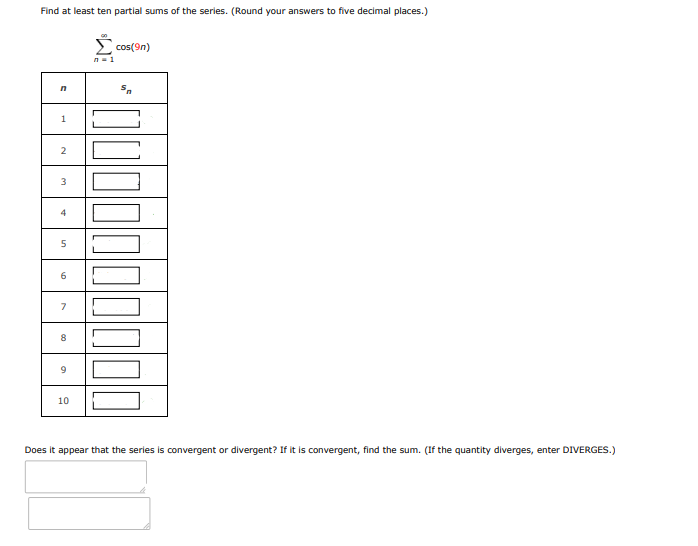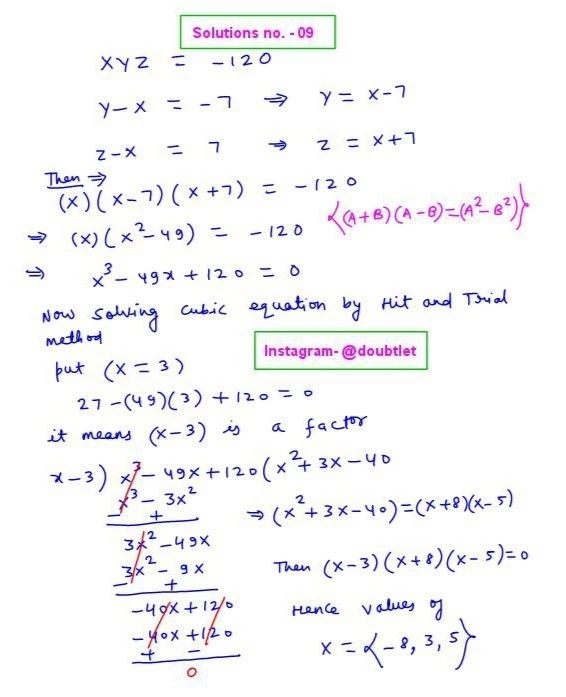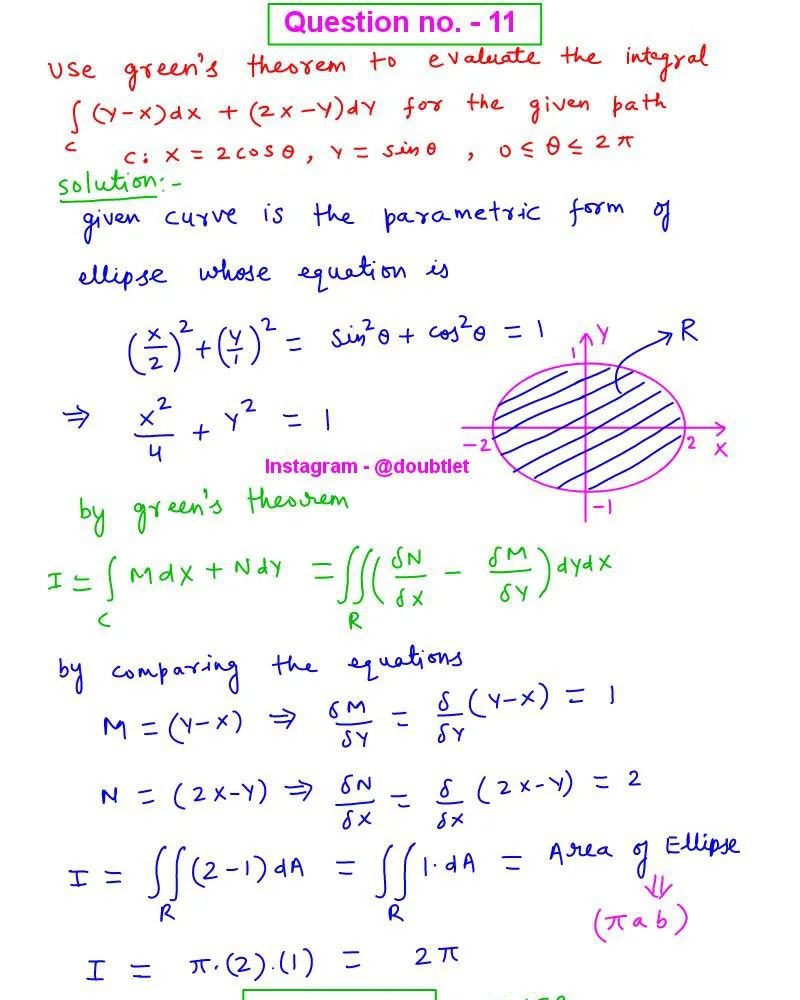
Neetesh Kumar | December 27, 2024
Calculus Homework Help
This is the solution to Math 1c
Assignment: 11.2 Question Number 4
Contact me if you need help with Homework, Assignments, Tutoring Sessions, or Exams for STEM subjects.
You can see our Testimonials or Vouches from here of the previous works I have done.
Get Homework Help
Step-by-step solution:
Step 1: Analyze the series:
The series involves the general term:
an=cos(9n).
The partial sum Sn is defined as:
Sn=k=1∑ncos(9k).
To evaluate the behavior of Sn, we need to compute the first 10 partial sums.
Step 2: Compute the first 10 partial sums:
Using a calculator or computational tool, evaluate:
-
For n=1:
S1=cos(9⋅1)=cos(9)≈−0.911130.
-
For n=2:
S2=S1+cos(9⋅2)=−0.911130+cos(18)≈−0.91113+0.6603167=−0.250813.
-
For n=3:
S3=S2+cos(9⋅3)=−0.250813+cos(27)≈−0.250813−0.29213880=−0.5429518.
-
For n=4:
S4=S3+cos(9⋅4)=−0.5429518+cos(36)≈−0.5429518−0.12796=−0.67091.
-
For n=5:
S5=S4+cos(9⋅5)=−0.67091+cos(45)≈−0.67091+0.52532=−0.14559.
-
For n=6:
S6=S5+cos(9⋅6)=−0.14559+cos(54)≈−0.14559−0.82930=−0.9749.
-
For n=7:
S7=S6+cos(9⋅7)=−0.9749+cos(63)≈−0.9749+0.98589=0.01099.
-
For n=8:
S8=S7+cos(9⋅8)=0.01099+cos(72)≈0.01099−0.967250=−0.95625.
-
For n=9:
S9=S8+cos(9⋅9)=−0.95625+cos(81)≈−0.95625+0.776685=−0.17957.
-
For n=10:
S10=S9+cos(9⋅10)=−0.17957+cos(90)≈−0.17957−0.44807=−0.62764.
Step 3: Populate the table:
| n | Sn |
|---|
| 1 | −0.911130 |
| 2 | −0.250813 |
| 3 | −0.542952 |
| 4 | −0.67091 |
| 5 | −0.14559 |
| 6 | −0.9749 |
| 7 | 0.01099 |
| 8 | −0.95625 |
| 9 | −0.17957 |
| 10 | −0.62764 |
Step 4: Convergence or divergence:
The partial sums Sn do not settle to a fixed value as n increases. Instead, the values oscillate due to the periodic nature of the cosine function. Therefore, the series diverges.
Final Answer:
(a)
| n | sn |
|---|
| 1 | −0.911130 |
| 2 | −0.250813 |
| 3 | −0.542952 |
| 4 | −0.67091 |
| 5 | −0.14559 |
| 6 | −0.9749 |
| 7 | 0.01099 |
| 8 | −0.95625 |
| 9 | −0.17957 |
| 10 | −0.62764 |
(b)
- The series diverges
Please comment below if you find any error in this solution.
If this solution helps, then please share this with your friends.
Please subscribe to my
Youtube channel for video solutions to similar questions.
Keep Smiling :-)















Leave a comment